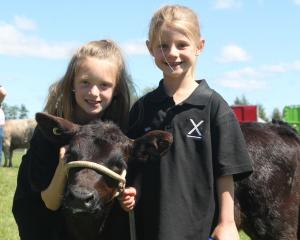
During a trial, a flying robot spread native seed across a gully on the couple’s 280ha property Oakwood Hills in Clifton in spring 2022.
"It bloody worked, which is cool because we didn’t think it was going to," Mrs Campbell said.
"I thought it was a gimmick," Mr Campbell said.
The trial was supported by Otago South River Care, which held an open day on the farm last week.
Prior to scattering the seed, the drone sprayed the gully with herbicide to control weeds.
Mrs Campbell collected the seed including cabbage tree, flax, kānuka, koromiko, mānuka and pittosporum.
Those species were selected because they were hardy, prevalent in the district and produced seed which were easy to collect.

Once the seed was scattered, some carry over cows were put in the gully in the hope their hooves would put the seed in the soil.
The drone sprayed a mix of two herbicides — Gallant to control grass and Versatill to control broadleaf weeds — in the gully up to three times a year.
So little was used that the cost was almost negligible.
The spray did not control gorse so another herbicide would need to be applied manually using a knapsack sprayer, she said.
Both summers since seeding had been dry, stunting weed growth and reducing the need for maintenance spray work.
She believed about four years of maintenance spraying would be needed for the native plants to survive.
Mrs Campbell said gullies covered about 20ha of the farm and it could be difficult to plant natives by hand.
She believed native trees grown by scattering seed were more resilient and drought-tolerant than those established in a nursery.
Both methods of establishing native plants had a place, she said.
The Campbells grow about 400 native trees in their on-farm nursery.
A plan is to sparsely plant nursery saplings in another gully on their farm and then have a drone scatter native seed around them.

Each visit by the drone costs about $1000 to cover the half a hectare in the gully.
Most of the cost was transport related, she said.
The cost of using a drone is much cheaper than doing the work by hand.
If a drone covered more land, the cost was reduced to about $350 per hectare, she said.
Otago South River Care co-ordinator Craig Simpson said more drone operators were entering the industry in the South so he expected the cost to fall due to increased competition.
To manually maintain native riparian planting was labour-intensive and expensive, costing up to $4 a plant.
"So flying a drone over is like ‘boom’ — so much easier," he said.














